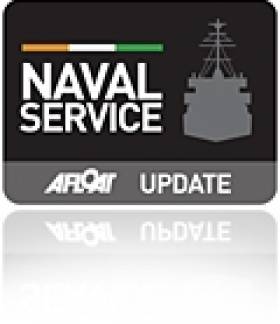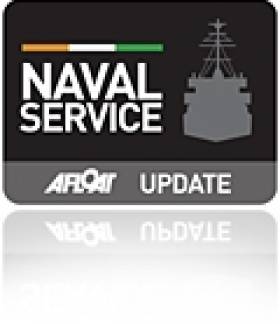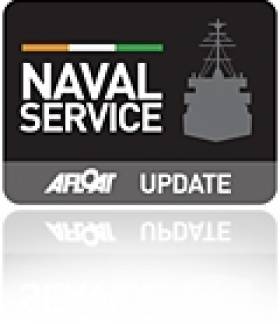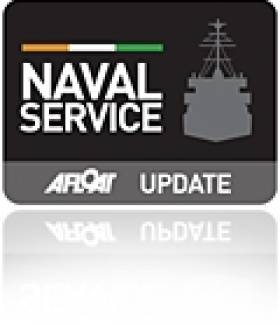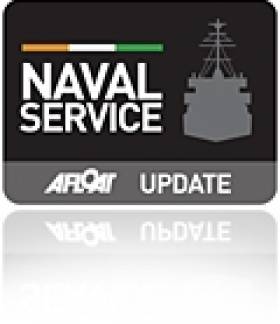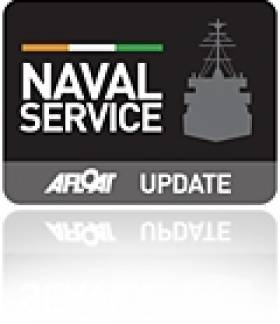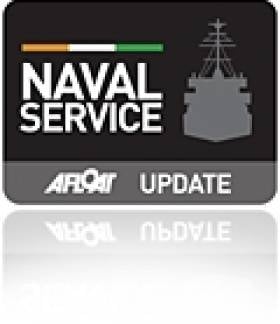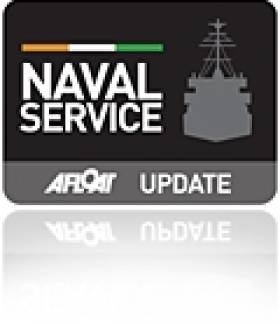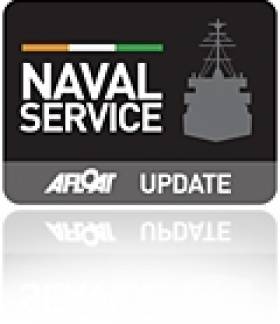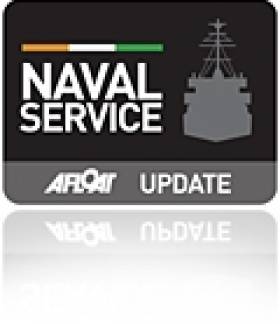Displaying items by tag: Navy
Naval Service Carry Out 900 Boardings in 2014
#NavalBoardings – More than 900 boarding's have been carried by the Naval Service so far in 2014.
In addition this year saw a total of 10 detentions for alleged infringements of fishing regulations during the 940 patrol days conducted by the fleet of eight vessels. Joining the fleet was newbuild OPV L.E. Samuel Beckett (P61) which entered service in May.
Infringements recorded during inspections on board a total of 31 fishing vessels ranged from incorrect boarding equipment to under recording of catch. These fishery infringements resulted in points being awarded against each vessel.
Such searches and detentions of vessels take place in a sea area that requires the Naval Service to patrols 1 million km2 of sea. The massive patrol zone equate to over twelve times the land mass of Ireland, representing 15% of Europe's fisheries.
Asides Irish and neighbouring UK fishing vessels boarded and inspected by the Naval Service, the following list of countries have also been with vessels from Belgium, Netherlands, France, Spain, Germany, Norway, Denmark, Russia, Lithuania, Faroe Islands, Portugal. Also fishing vessels from as far as Mauritania in west Africa are part of this international fleet.
As part of fishery duties the Naval Service operates the National Fisheries Monitoring Centre and strives hand in hand with the Sea Fisheries Protection Agency.
Combined these agencies are to safeguard and manage our rich fisheries for current and future generations' sustainable exploitation.
The Naval Service with the Air Corps assist the Ordnance Survey Ireland (OSI) in Base Lines Project to map Ireland's sovereign claim to the seas around our island for generations to come.
Navy Recruit Class 'John DeCourcy' Passing Out Parade Scheduled For Thursday
#navy – The Flag Officer Commanding Naval Service, Commodore Hugh Tully, will attend the passing out parade of Recruit Class "John DeCourcy" at the Naval Base in Haulbowline on Thursday 18th of December at 2.00pm.
The thirty-six recruits successfully completed 19 weeks of training, including seamanship, basic sea survival, Naval Boarding, foot drill, weapons handling and Damage Control & Fire Fighting, within the Naval College.
The parade marks the first step for the new recruits as they continue their professional development in the Seamanship, Engineering, Communications and Logistics branches of the Naval Service. On completion they will take up appointments both ashore and at sea.
The class includes thirty-five males and one female, who commenced training at the Naval College, Haulbowline on 18th of August 2014. They are from Antrim, Cork, Donegal, Down, Dublin, Kerry, Laois, Longford. Louth, Meath, Monaghan, Offaly, Sligo, Tipperary, Waterford and West Meath. A number of recruits are continuing proud family traditions in the Defence Forces.
Recruit Craig O'Sullivan married his fiancé Liamhain on Dec 6 th last in Mahon Church. His new wife and beautiful daughter will be proudly watching Craig as he completes his training.
The recruit class conducted a row-athon and collected €4,500 which was presented to the South Infirmary Children's Ward.
Warship Navigation Systems Contract Signing with Naval Service
#SoftwareContract - OSI Maritime Systems (OSI) has announced the signing of a contract with the Naval Service to deliver warship navigation systems, writes the Maritime Executive.com
The contract includes OSI's ECPINS-W (Warship) software and under the terms of the deal OSI will provide engineering services, ship systems, operator training systems, and installation services.
In addition the company will install the systems throughout the entire Naval Service fleet.
According to the contractor, ECPINS-W is the only software certified by an International Association of Classification Societies approved body against the NATO WECDIS STANAG 4564.
L.E. Aoife to Be Auctioned in February 2015
#AoifeAuction – L.E. Aoife (P22) the Naval Service's oldest OPV unit has finally been given a timeframe for its disposal by public auction (if not previously sold) in February 2015, writes Jehan Ashmore.
According to Cork based auctioneers, Dominic J. Daly, they have been instructed by the Department of Defence to dispose of the offshore patrol vessel which entered service in November 1979. She was built at Verolme Cork Dockyard as the second of a trio of 'Emer' class sisters.
As previously reported on Afloat.ie, the OPV was originally scheduled to be disposed of last October, a year after the sale by auction of L.E. Emer to Nigerian interests.
The delay on disposal as previously reported on Afloat.ie hinged on the progress in constructing her replacement the newbuild OPV 90 class James Joyce which in recent days was floated-out at Babcock Marine's shipyard in Devon.
Viewings of the L.E. Aoife can be made strictly by appointment only by contacting the auctioneer on 087 2550486 and for more info click HERE.
The newbuild OPV90 class James Joyce is expected to be delivered to the Naval Service in early 2015.
Appledore Shipyard Floats-Out New Vessel for Irish Navy
#OPVJamesJoyce – A new offshore patrol vessel for the Irish Navy has been floated for the first time, reports the BBC.
The Irish Naval Service's LÉ James Joyce was constructed at Babcock's Appledore shipyard in north Devon. The 90m-long vessel, with a top speed of 23 knots and a range of 6,000 nautical miles, is 92% complete.
Babcock was awarded the contract to build two offshore patrol vessels by Ireland's Department of Defence in 2010.
Babcock shipbuilding director, Andrew Hamilton, said: "We are delighted to achieve this important and highly visible milestone to quality, budget and schedule. "We will now be focusing on final outfit, completing sea trials and commissioning before handover to the Irish Naval Service early in 2015."
The vessel will undertake a range of duties including fishery protection, search and rescue, anti-pollution and maritime security duties.
For more related stories from the BBC click here.
Afloat.ie adds that her predecessor, L.E. Samuel Beckett (P61) the leadship of a trio of new OPV90 class newbuilds was launched as previously reported from the same Devon shipyard this month a year ago.
#AoifeAuctionUpdate – L.É. Emer (P21) which was sold at public auction this day last year to Nigerian interests for €320,000, was to be followed 12 months later with the disposal of sister L.É. Aoife (P22) however this has been postponed, writes Jehan Ashmore.
Commenting to Afloat.ie as to the decision to defer the auction date this autumn, the Naval Service said that they are planning for the decommissioning process of L.É. Aoife. However, no firm date has been set for this event which will be dependent on progress made on the build of the L.É. James Joyce. It is the responsibility of the Department of Defence reference the sale of L.É. Aoife thereafter.
In the meantime L.É. Aoife, the second of the trio of 'Emer' class OPV's is undergoing dry-docking at Cork Dockyard Ltd. The shiprepair site at Rushbrooke was the former Verolme Cork Dockyard which completed the 1,019 tonnes displacement vessel for the Naval Service. She was commissioned 35 years ago when she joined the naval fleet on the 29 November 1979.
Cork based auctioneer Dominic J. Daly sold the leadship L.É. Emer to Uniglobe Group, however she remained in Cork Dockyard for work to prepare her new role and departed during this summer.
The auction of L.É. Aoife is part of a programme to replace the ageing series. Her successor L.É. James Joyce is the second of three OPV90 or so called 'Beckett' class on order from Babcock Marine in the UK.
When L.É. Aoife is eventually sold this will leave L.É. Aisling (P23) as the final unit to be disposed. She will be replaced by a third newbuild again costing €54m and due for delivery in 2016.
Naval Service Reserve Passing Out Ceremony At Haulbowline
#navy – Ten new recruits to the Naval Service Reserve completed their training in a ceremony in the Naval Base on Haulbowline yesterday. The 10 recruits, 9 from Cork and 1 from Dublin endured 3 weeks of intense training where they covered a range of subjects such as foot and arms drill, marksmanship, sea survival, fire-fighting, military law and an introduction to military customs, traditions and way of life.
This is a milestone as it marks the first integrated Naval Service Reserve recruit class since the inception of the Single Force Concept which is a key element of the 2012 Defence Forces Reorganisation. The training was shared between members Naval College and the Naval Service Reserve. The Naval Service Reserve will soon be seeking a total of 25 potential recruits in its Cork (2), Dublin (5), Limerick (8) and Waterford (10) units.
The role of the NSR is to augment Naval Service seagoing strength through provision of trained personnel whilst at unit level providing the capability for an armed Naval Element afloat with local shore support and expert local maritime knowledge and intelligence in support of PDF Operations at and from the sea in the main trading ports in support of maintenance of National Sea Lines of Communication (SLOC).
The Naval Service is an integral part of Óglaigh na hÉireann / Defence Forces and operates jointly with the Army and Air Corps. The Naval Service protects Ireland's interests at and from the sea. Currently, the Naval Service is tasked with a broad range of maritime defence, security and other roles. Routine patrols are multi-tasked to encompass national and maritime security, ocean governance, fishery protection, safety and surveillance, port security, drug interdiction, pollution control and search and rescue.
The Service also supports Army operations in the littoral and by sea lift. It provides support on Aid to the Civil Power and Aid to the Civil Authority operations, including inter alia maritime security cordons, and possesses the primary diving team in the State. The Fisheries Monitoring Centre ( FMC) at the Naval Base is the designated national centre with responsibility for monitoring all fishing activity within the Irish Exclusive Fishery Limits and all Irish fishing vessels operating around the world. In addition, Naval Service Vessels have undertaken supply and reconnaissance missions to overseas peace support operations and participated in foreign visits in support of Irish Trade and Diplomacy.
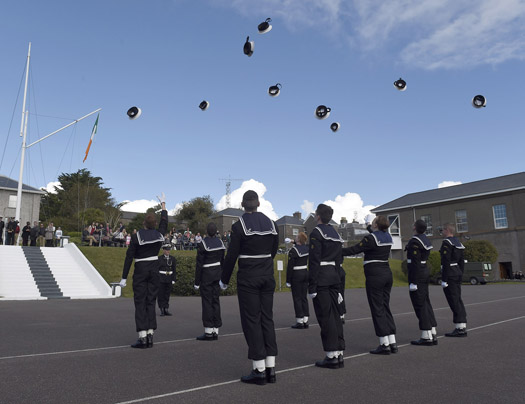
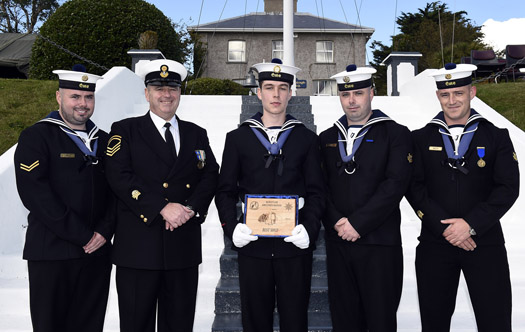
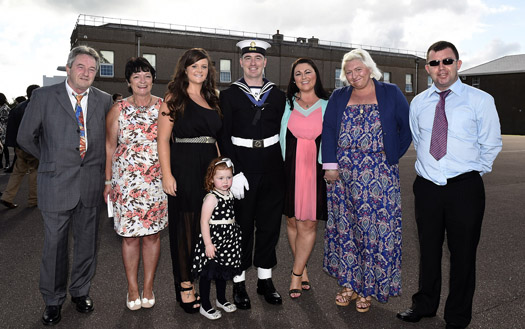
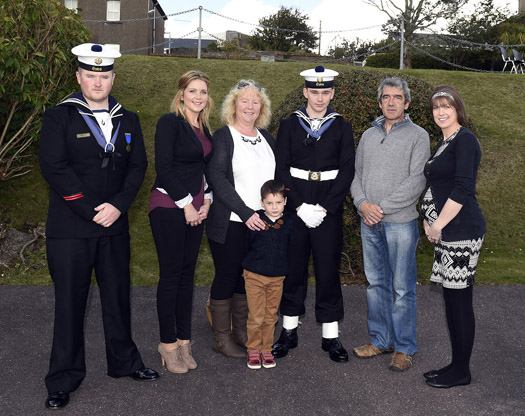
Naval Service Showcase L.E. Samuel Beckett at OPV Conference
#OPVconference- L.E. Samuel Beckett (P61) is appropriately docked in Dublin Port, having arrived last night on the eve of today's start of the International Offshore Patrol Vessels Conference (30 Sept-2 Oct) held in the capital, writes Jehan Ashmore.
The €54m OPV90 class newbuild of 2,226 tonnes is berthed alongside Sir John Rogersons Quay, where a ceremony as previously reported saw her christened and commissioned into the Naval Service in May.
As the class name suggests, the OPV is 90 metres in length, which is 10 metres longer than her predecessor, L.E. Niamh (P52) the second of a pair of 'Roisin' class built for the Naval Service 12 years ago in Appledore, north Devon by Appledore Shipbuilders. The yard is now owned by Babcock Marine & Technology, one of several such facilities in the UK which forms part of Babcock International.
L.E. Samuel Beckett has a crew of 44 though this can be extended to accommodate ten more for cadet trainees. As for her main weapon, this is a OTO Melera 76mm compact gun mounted on the bow, two 20mm Rheinmetall cannon guns located on either side of the funnel casing and elsewhere four smaller machine guns. Engine power is from a pair of 6 cylinder Wartsila diesel motors driving twin shafts that propel a top speed of 23 knots.
Her presence along the Liffey's city centre quays represents the latest in OPV design. From next year she is to feature (UAV) Unmanned Aerial Vehicles for surveillenace purposes as required for the role of the naval branch of the Irish Defence Forces which is in association partnering the major three-day OPV conference.
Among the speakers from the more than 20 nations representing OPV industry stakeholders, navies and shipyards is Andrew Hamilton, head of Babcock International. The same north Devon yard that built L.E. Samuel Beckett, is where her sister L.E. James Joyce is currently under construction as part of an original order for the pair. She is due for completion in the first quarter of 2015.
Last June, the Department of Defence took up the option of ordering a third OPV90 or 'Beckett' class sister from the yard for the fixed price of €54m based on 2012 prices. The yet to be revealed name given for the final member of the class is due for delivery in 2016.
Major Offshore Patrol Vessels Conference Heads for Dublin
#OPVconference- A major three day conference on the Offshore Patrol Vessels industry will be held in Dublin starting tomorrow.
Among the delegates speakers of the International Offshore Patrol Vessels Conference (30 Sept-2 Oct) now in its 9th year will be Rear Admiral Mark Mellett of the Irish Defence Forces who also are hosting the event as associate partners.
The conference which takes place in the Radisson Blu Royal Hotel, will enable opportunities for face-to-face meetings to discuss cost-effective solutions for offshore asset protection and enhanced maritime security with military, OPV shipbuilders and industry stakeholders from the Middle East, Latin America, Africa, Asia, Europe and North America.
The new Samuel Beckett-class OPV as previously featured on Afloat.ie is also discussed by Mellett in Defence IQ (click here for podcast, available through registration).
The Rear Admiral also discusses the construction of the vessel with an eye towards climate change, cost-efficiency in a complex maritime environment, meeting emerging threats, and reveals his key to working effectively with industry partners and shipyards.
On a related note, Babcock Marine & Technology the shipyard which built L.E. Samuel Beckett (and a pair of sisters on order), will be represented at the conference by speaker delegate Andrew Hamilton of Babcock International.
Also attending the conference will be Flag Officer Commanding Commodore Hugh Tully of the Naval Service.
For more details on the conference: www.offshorepatrolvessels.com/Default.aspx
Caribbean Drug Yacht Seized By Irish Navy & Taken To Cork Harbour
#drugsmuggling – An 18–metre yacht (60–foot) carrying an estimated street value of between €70m and €80m of Cocaine seized off the South West coast has arrived in to Cork Harbour after arrest by the Irish Navy last night.
Three men believed to be from the UK were detained on board the yacht, a Naval Cantiere 62 type, called the Makayabella.
The yacht was 200 miles off Mizen Head when the seizure was made. It was boarded by Navy drug interdiction personnel under cover of darkness in on Tuesday morning.
The shipment is understood to have originated in South America, while the yacht set sail from the Caribbean,
Six years ago, another 60–foot yacht on a transatlantic passge fom the Caribbean was also intercepted on the southwest coast by Gardaí, the Naval Service and Customs. A consignment of at least 1.5 tonnes of cocaine found on onboard was seized.The crew of that yacht were arrested and taken into custody by the LE Roisin at Castletownbere harbour. That haul matched the 2007 record €440m seizure at Dunlough Bay in west Cork.
The latest seizure was from on a vessel that was taken into custody around 200 miles off the southwest coast last night.
A full garda technical examination of the Makayabella will get under way this morning.
The seizure of around a tonne of cocaine is believed to be one of the biggest drugs seizures at sea in Europe this year.
Details of the operation were kept secret to facilitate follow-up investigations, both in Ireland and abroad.
The vessel is believed to be in poor condition following its transatlantic crossing.
{youtube}Ap9xp5W_QFY{/youtube}
According to RTE News, the Maritime Analysis and Operations Centre for Narcotics, based in Lisbon in Portugal, is also understood to have been involved in the operation, along with Britain's National Crime Agency, as well as security and customs agencies elsewhere.


























